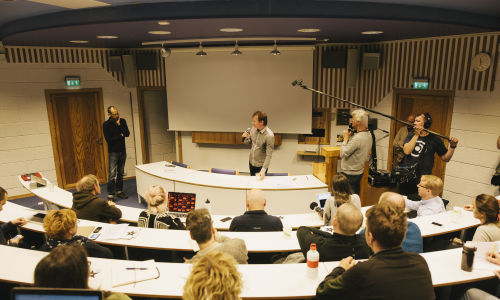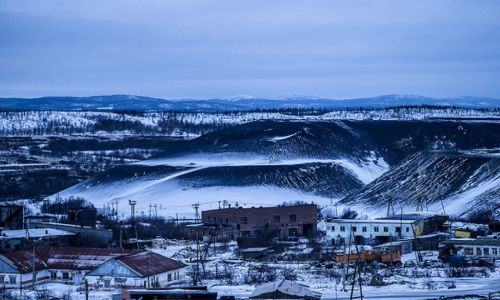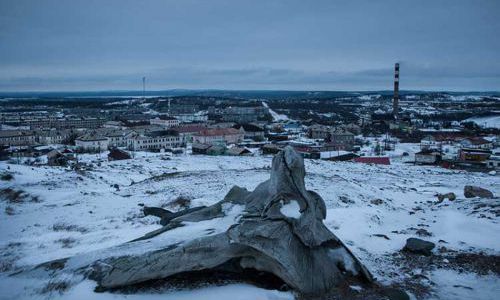Field_Notes – HYBRID MATTERs
Art&science field laboratory week at the Kilpisjärvi Biological Station
14. - 20. September 2015
Kilpisjärvi, Finland
Five groups work for one week in the sub-Arctic Lapland. Together with a team of five selected collaborators, they develop, test and evaluate specific interdisciplinary approaches in relation to the notion of Hybrid Ecology.
Field_Notes – HYBRID MATTERs is in search of artistic and scientific responses to converging ecologies. The local sub-Arctic ecology and environment, as well as the scientific research and infrastructure of the Kilpisjärvi Biological Station will act as fields and catalyst for the work carried out.
During one week five groups approach the HYBRID MATTERs theme from different angles. They organize themselves in work groups, teams, think tanks, and workshops. They carry out their work in their related fields, as well as have common activities of lectures,presentations and feedback sessions.
Hybrid Matter
Anything which has a physical and technological aspect can be considered as hybrid matter and as part of a Hybrid Ecology. Hybrid Ecology is a thought vehicle to think about converging ecologies. It is unfolded through the multiple interactions of its elements and actors in physical and digital spaces. Actors can include for example well established or new biological organisms, things, networks and machines as well as products of human activity like goods, trash, waste or landscapes and more. For example a genetically altered or synthetic organism is of technological origin but biological in matter. Hybrid Ecology permits to expand the traditional concepts of environment and ecology and allows us to rethink our relation to the world.
The groups
Seven Senses on the Land (SSOTL)
Hosted by Marko Peljhan and Matthew Biederman of the Arctic Perspective Initiative (API) together with Leena Valkeapää
Participants: Netta Norro, Stephan Dudeck, Avner Peled, Judith van der Elst, Jose Marcos Perez Diaz, Alia Malley, Charli Clark
Complex ecological networked systems can be observed, read and navigated by employing Intuition and Technology. Artists, hunters and herders, tactical media workers and scientists will be joining forces to develop, deploy, use and question enhanced sensing systems and methods. This could lead to new and surprising insights and construction of semantic territories, in which the gaze and measurement become knowledges and are projected back onto the land in order to structure completely new vectors of meaning, understanding and orientation.
Our senses guide us through the world. Combined with experience, knowledge and openness we can begin to develop new realtionships and understandings of Earth systems and our collective embedded positions within. We develop the ability to augment these senses through Technology and Intuition, engaging Local and Traditional knowledges, Art, Engineering and Sciences. This group will explore the machinic in the ecologies and the animals in the machines.
Read their report from Kilpisjärvi at Field_Notes blog.
Photo: Netta Norro
PostNatural - Hybridization, Intention, and the Alteration of Living Things
Hosts: Richard Pell and Lauren Allen of the Center for PostNatural History
Participants: Laura Beloff, Åsa Ståhl, Andrea Roe, Cathrine Kramer, Zack Denfeld, Erik Sandelin
The PostNatural group focuses on the notion of intention when we consider hybrid and other human-manipulated species and habitats. We have defined PostNatural as the intentional alteration of an organism’s inherited traits – but cannot deny that there are also many unintentional and semi-intentional consequences of human relationships with other life-forms and their habitats.
Using photography, specimen collection and other natural history methods, we document and collect evidence of organisms that have been altered by the intentional practices of domestication, breeding, and genetic engineering, and by the unintentional (or less intentional) consequences of habitat destruction, globalization, and climate change. We explore habitats that have been constructed, managed, or affected by human guidance, as well as habitats influenced unintentionally by human behaviors. We explore and imagine what makes these different organisms and their habitats visible and invisible to humans eg. why some “feel wrong” or are unnaturally attractive.
Read their report from Kilpisjärvi at Field_Notes blog.
Photo: Maia Iotzova
(sonic) Wild Code
Hosted by Antye Greie aka AGF www.poemproducer.com
Participants: Till Bovermann, Dinah Bird, Anja Erdmann, Kristina Lindström, Vygandas Vegas Simbelis, Caspar Ström
As humans we inhabit a hybrid ecology and as such we are part of the biological and technological ends of our world. In recognizing this, one can state that it is our responsibility to connect both peripheries to develop ethical and respectful forms of co-existence and ideally beneficial interaction.
The (sonic) Wild Code Team investigates notions of coexistence, communication and potentials for interaction in a hybrid ecology. By immersing itself into the vast and raw landscape of Lapland around Kilpisjärvi, the group researches and tests possibilities to enable the landscape to speak for itself.
Methods include listening to the land, communicating to the land, analyzing the heard and the code and finding common and uncommon denominators and more. From this experience the group imagines sonic and other wild interfaces to enable communication, articulation and learning processes for actors in the landscape and the landscape itself.
Read their report from Kilpisjärvi at Field_Notes blog.

Photo: Till Bovermann
Encounters in a layered landscape - mapping Hybrid Ecology
Hosted by Antti Tenetz www.tenetz.com
Participants: Theun Karelse, Maia Iotzova, Lori Hepner, Anssi Laiho, Piibe Piirma, Peter Flemming
The Hybrid Ecology mapping group puts the thought vehicle of Hybrid Ecology into practice. The group explores the Kilpisjärvi hybrid ecology in space and over time – from the first fragments of life to the latest technology. It views the landscape as a dynamic system consisting of interconnect elements of biological, geological and technological origin.
Geo location and field exploration tools are used to collect the many stories of the land: the tracks of people and other animals, sites of human impact from hidden layers from Neolithic dwelling grounds to the Second World War and up to the contemporary, biological and technological ecologies, places of hybrid encounters, findings form the other groups and more. This mapping attempt aims to find strategies to visualize a hybrid ecology. The groups research revolves around the notion that humans have always been a hybrid species. Without any technological means to cope with the environment we will die in arctic within the cycle of year. We need technologies in order to survive, the extreme is the limit and adaptation is key for our survival.
Read their report from Kilpisjärvi at Field_Notes blog.

Photo: Theun Karelse
Second Order
Host: Lea Schick
Participants: Hannah Rogers, Jens Hauser, Maren Richter, Anna-Katharina Laboissière, Miguel Santos, Tiina Prittinen
The second order group has a different working model then the rest. It is composed of philosophers, theorists and other suitable practitioners, who are being embedded into the other groups. Their work is twofold, on the one hand, they do research on the rest of the groups, and at the other hand, they act as subversive agents to introduce counter perspectives.
The aim is to critically look at the methods and practices of the field, and to see whether there are ethical or aesthetic questions specific to certain practices. The group uses the tools of philosophy of science and art, science and technology studies, art history, and more. In order to study and intervene in the other groups they employ various inventive methods.
Read their report from Kilpisjärvi at Field_Notes blog.

Photo: Maren Richter
Read more: fieldnotes.hybridmatters.net
Read more on previous editions of Field_Notes:
2011 / Field_Notes - Cultivating Ground
2013 / Field_Notes - Deep Time
BOOK: Field Notes From Landscape to laboratory
Read more about the organiser, Finnish Society of Bioart: bioartsociety.fi
Looking back: Field_Notes HYBRID MATTERs
Text
Hybrid landscapes, ecology and DIY in the wild, a report at Makery.info by Netta Norro
Machine Wilderness, a blog post by Theun Karelse.
Sound
Reindeer crossing concert by Dinah Bird.
Layered Landscape recordings by Anssi Laiho, with the waves of Kilpisjärvi, the crash site of the German Juncker’s airplane crash site (92 sounds of aluminium) and some human sounds from tipi (kota).
Video
Sonic Wild Code - Reindeer Fence, Färist & Helicopter near Čáhkáljávri, Sápmi [Samiland] from Antye Greie-Ripatti on Vimeo.
Mushroom Bumping from tai-studio on Vimeo.
From the Book
-
Dark Ecological Chocolate
Timothy Morton
Dark ecology starts off dark as in depressing. Then it becomes dark as in mysterious. Then it ends dark as in sweet dark chocolate. In this lecture I'm going to provide an experiential map of dark...
-
Nikel — The City as a Material
An interview with Tatjana Gorbachewskaja
Tatjana Gorbachewskaja is an architect who grew up in the Russian town Nikel, located in the far North near the Russian border with Norway. For Dark Ecology Project she researched the materials of...
-
What Is Dark Ecology?
Timothy Morton
In this essay, which draws on his book Dark Ecology, For a Logic of Coexistence, Timothy Morton — who originally coined the term dark ecology — explains what dark ecology is. He also argues how...






